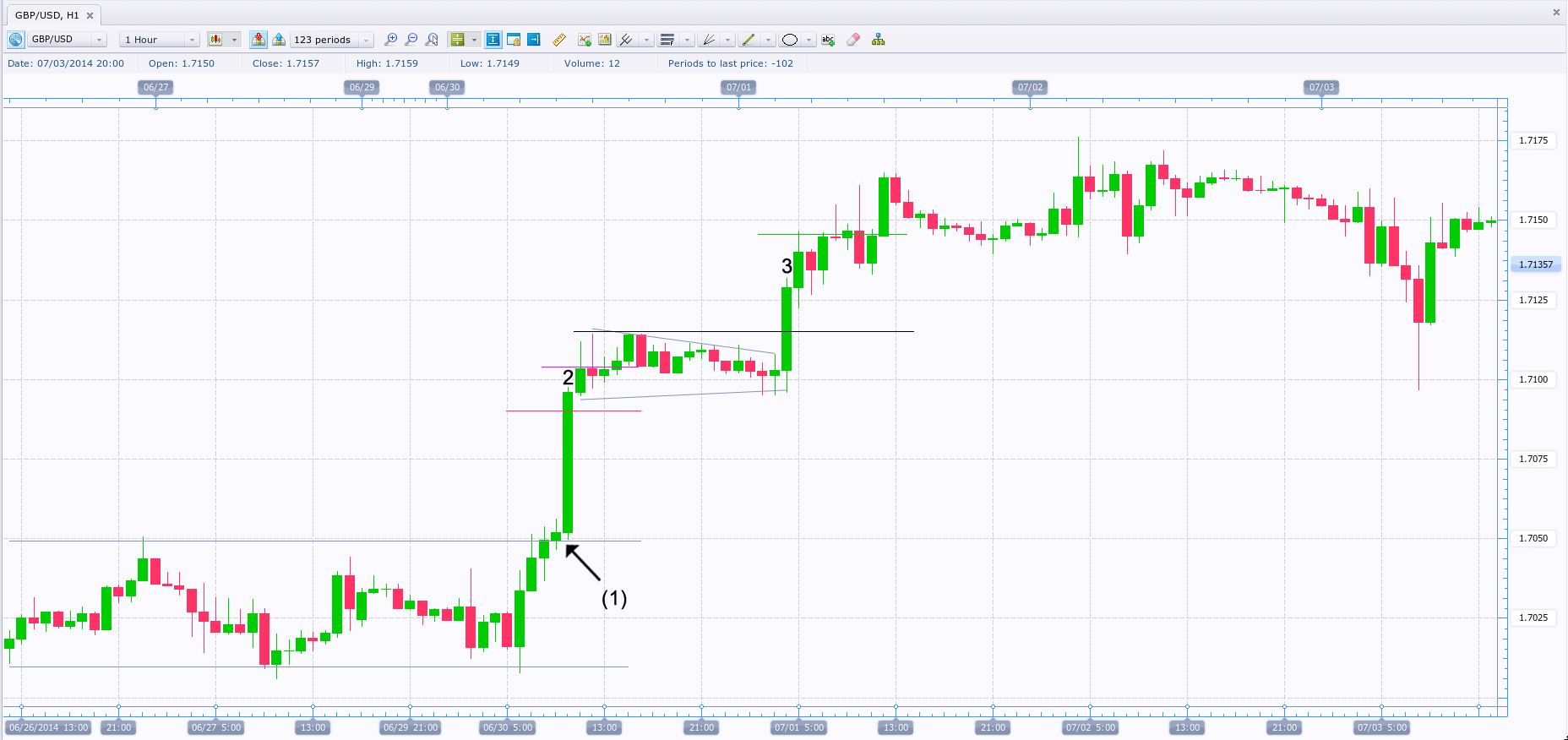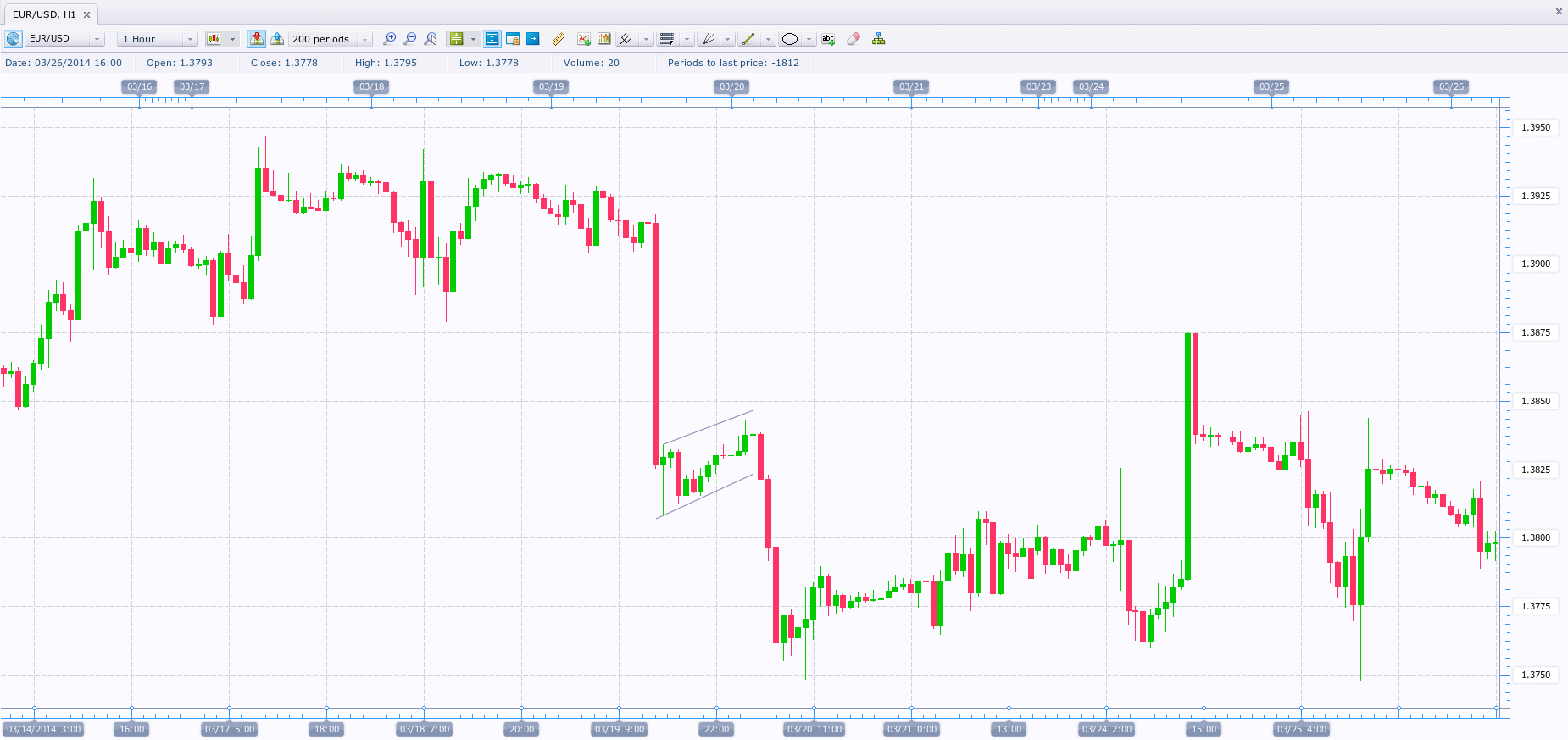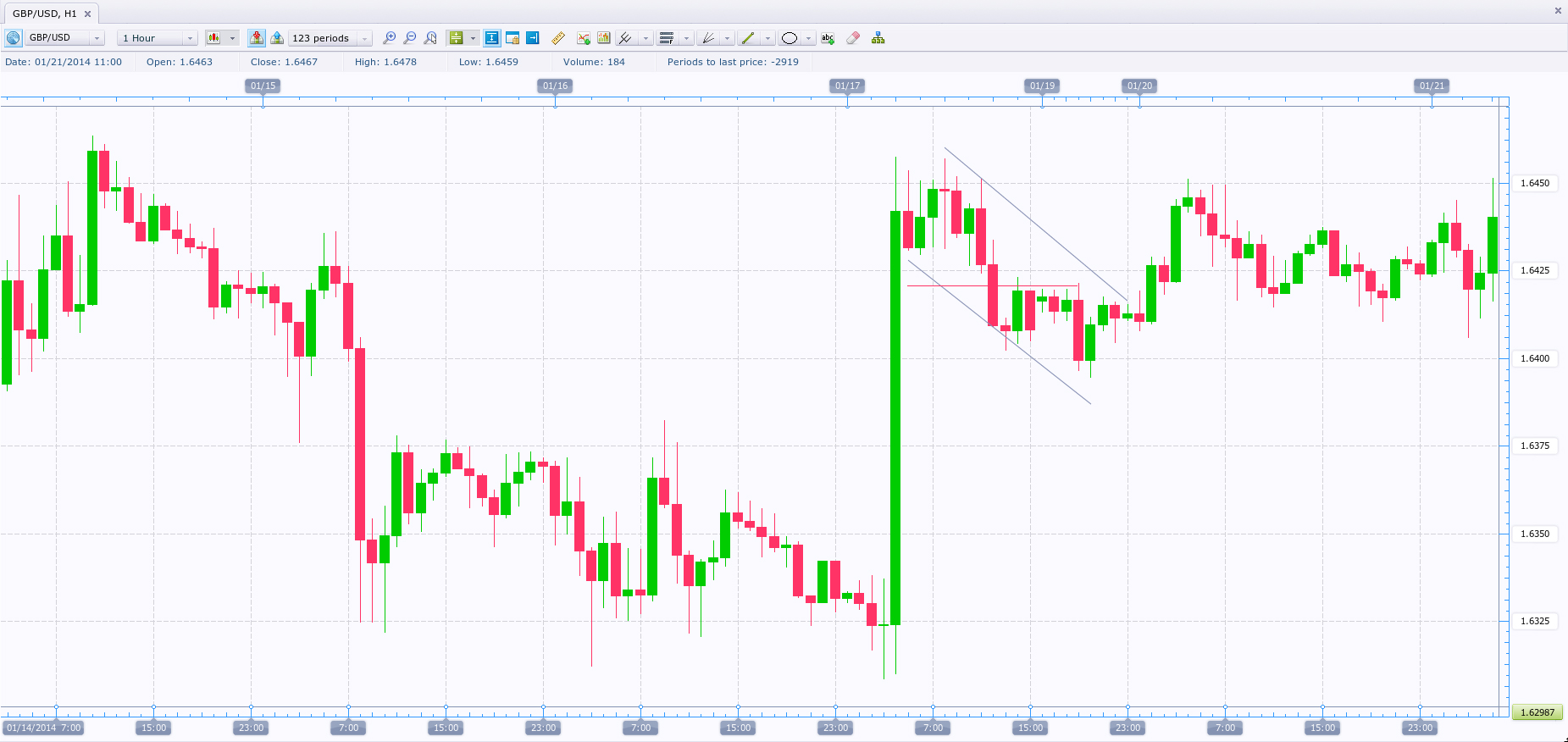Trading Flags and Pennants Formations
This lesson will cover the following
- Pennant formations
- Flag formations
- How to trade them
rder to improve our chance of success wit
We have already spoken about flags and pennants formations in the article “Flags and Pennants Price Pattern” our “Forex Trading Guide” so we briefly summarize what these patterns are and quickly move on to the trading strategy.
Flags and pennants are both predominantly continuation patterns which start with a sharp initial move (we will call it a flagpole), followed by a consolidation period. The price then usually breaks out in the direction of the flagpole, thus rendering them continuation formations. As it was pictured in the article “Flags and Pennants Price Pattern“, the main difference between the two is that the pennants consolidation period resembles a triangle (the two boundaries are sloping toward each other and will eventually converge), while the flags consist of two concurrent lines which together slope away from the flagpole.
Pennant pattern
Let us dig into the specifics of the pennant pattern. As we said, it is made up of two elements – an almost vertical climactic bar (the flagpole), followed by a zone of sideways trading – the consolidation area (most often a symmetrical triangle).
Before entering a trade based on this formation, you of course need to have a predetermined entry point, stop-loss and profit target. The first step is to measure the height of the flagpole. After the price has entered the consolidation area (which allows for the measurement of the flagpole), we set our entry point at 10% of its height above its highest point. This should help filter out any false breakouts from the formation.
Our stop-loss should be 25% of the flagpoles height and is placed below the entry point, thus 15% below the flagpoles high. This will protect you from an eventual failure of the patterns continuation nature.
As for the profit target, we will be using a scale out strategy. Our first profit target is the amount risked, i.e. 25% of the flagpoles height. As soon as it is reached, we take out half of our position and we will move our stop up to the entry point. This leaves us with a profit of 25% of the flagpoles height on the first portion of the trade, while the remainder may drop to breakeven in the worst case scenario.
The profit target for the remainder of our position will be equal to the length of the flagpole, starting from its top (page 176), i.e. 90% of the flagpoles length up from the entry point (the 10% difference comes from the entry point being 10% of the flagpoles height above its high).
Example
For the screenshot above we have used an hourly chart of the GBP/USD cross. The market broke out of an established trading range at (1) and formed a flagpole (bar 2).
Once the price action later entered a consolidation area and it started resembling a flag/pennant formation, we begin to calculate the patterns elements in order to position ourselves accordingly.
The flagpoles high is at 1.7098 US dollars and its height is 48 pips. Thus, we enter at 10% above its height (or 5 pips), at 1.7103, as marked by the purple horizontal line. Our stop is placed 25% of the poles height below the entry (or 15% beneath its high – 7.2 pips), at 1.7091 – visualized by the red horizontal line.
Our final profit target is 100% the flagpoles height extended above its high (or 90% above the entry point), thus at 1.7146 US dollars, marked by the green horizontal line.
However, we said we will be scaling out from the trade, as soon as we profit the amount risked. This means that when the price rises by 25% of the flagpoles height, projected from the entry point, we will exit half of our position and move our stop to breakeven. The initial profit target was reached at 12 pips above the entry level, or at 1.7103 + 0.0012 = 1.7115 US dollars, visualized by the black horizontal line. It was hit at bar 3. We then exited half of our position and moved our stop-loss to breakeven, before our final profit target was reached shortly after.
Flag pattern
Like pennants, flags also begin with a very strong initial move, followed by a consolidation area. The climactic bar which forms reflects the bulls dedication to buy, disregarding the price they are paying – they just want to be on the market at all costs. Such a move is often triggered by a major economic indicator, interest rate decision etc.
After the initial spike, some bulls lock in profits, which allows bears to try and bring the price down but in many cases they wont possess enough selling power to overcome the bulls, which will eventually lead to the upward breakout and trend continuation.
Due to the two patterns similarities in formation and outcome, they are also traded in an analogous manner. Again, we first need to measure the flagpoles height. The entry point is above the high of the flagpole, with a distance equal of 10% of its height. The calculation and placement of the stop-loss level is also identical to the pennant patterns – the stop is placed at a distance of 25% of the flagpoles height below the entry point (or 15% of the height below the flagpoles highest point).
Once again, our first profit target is equal to the amount risked, projected up from the entry point (25% of the flagpoles height). As soon as it is reached, we exit half of our position and move our stop-loss to the breakeven level (entry point), so that in the worst case scenario we are left with the profit from the first part of the trade. Once that is done, we aim for the second profit target, which again is equal to 100% of the flagpoles height, projected up from its highest point (90% of its high projected up from the entry point). On the screenshot below you can see a reversed flag formation.
Rules are important
In order to improve our chance of success with both patterns, it is crucial to follow up on the entry and stop-loss guidelines we earlier underscored. It is of utmost importance to respect the entry rules to filter out potentially losing trades. In the example below you can see how a potential flag formed a flagpole but an early entry at the high of the flagpole, disregarding our established entry rule, would have gunned our stop.
The flagpoles high and low were at 1.6458 and 1.6310, thus its height was approximately 148 pips. According to our strategy, we should have entered at 10% that amount above the high itself, but the market initially failed to rally to that point, thus you should abstain from going long.
However, if a trader was so eager to hop on the market at the high of the flagpole that he would disregard the entry rule, he cant filter out potential failed flags. Say he entered at the flagpoles high and he placed a stop-loss equal to 25% of its height beneath the entry point at 1.6421 USD (1.6458 USD – 0.0148 USD x 0.25). It is visualized by the red line, and as you can see it was hit, rendering the trade a loser.


